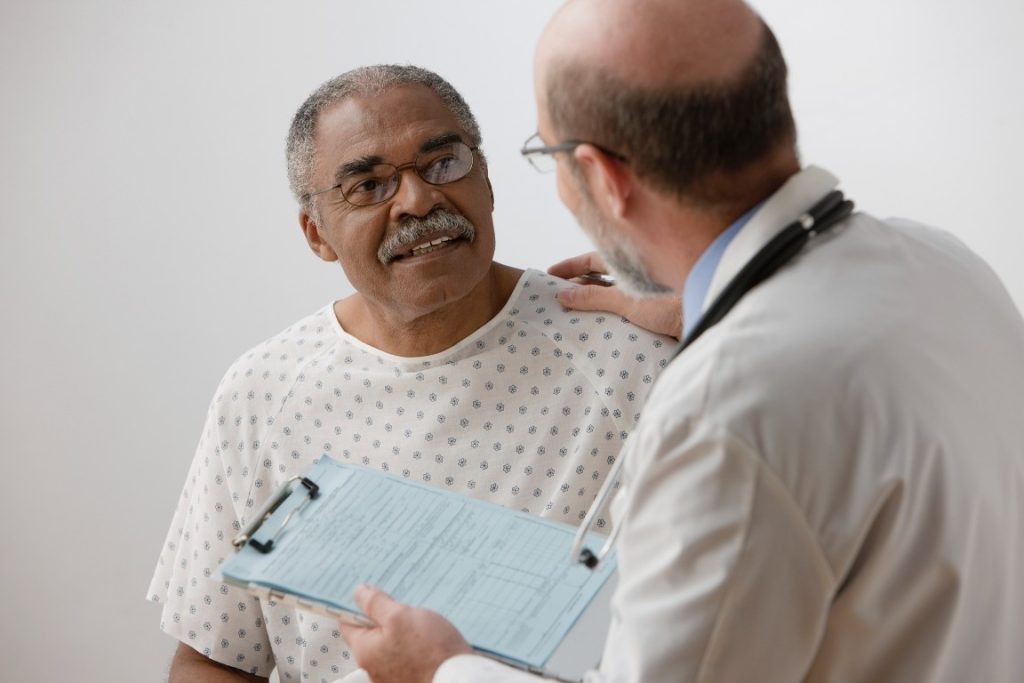
I was asked the other day by an informatician (who is not a patient of mine) what role “touch” plays in medicine. What can I, as a physician, learn from touching a patient that cannot be acquired in some other way—for example, via chart review, screen or glance, stethoscope or digital imaging, or any of the myriad lab results available?
After all, it could be argued that, with concerns about stories of patients abused by healthcare professionals and the increasing emphasis on physician productivity, it might be preferable to eliminate the role of touch when examining patients.
My response is simple: touch traverses the boundary between healer and patient. It tells patients that they are worthy of human contact—that indeed, they are still recognizably human, even if their symptoms, and accompanying fright, suggest that their medical conditions are out of control. Indeed, those conditions might well be under control, even if a patient’s imagination is racing to terrible possibilities.
Proper physician touch models the calm and protection that are at the very core of healing a patient’s wounds, whether they be physical or emotional. Touch is part of building trust in the physician/patient relationship; it is my obligation and privilege to palpate, to touch a patient during an exam, in an effort to gain valuable medical information, whether it is found on a patient’s hand or neck, ankle, chest or back.
The process is well thought out; it involves my informing patients what medical information I am looking for and where, on their bodies, I might find it. I want my patients to sense that someone is taking the time to observe, to consider, and to actively engage with them.
Even as a pulmonologist, I begin, simply enough, by shaking the patient’s hand. It’s a bit of a trick, I suppose, allowing me to begin with a common gesture, by palpating the tissues of the hands. (Are they inflamed? Thickened? Perhaps callused or arthritic from a life of manual work?) And it lets me compress the nails. (Are they perfused? Clubbed? Cyanotic?) . And check the pulse (erratic, rapid, strong?) at the wrist.
What follows is an examination of other parts of the body that may help tell the medical story, even if the patient is unaware of it. For example, I’ll touch the neck (to determine the bulk and strain of the accessory muscles of breathing and to feel the cardiac impulse of the carotid pulses); the movement and vibration of the trachea (paying attention to quiet breathing and swallowing); the vibration of the chest and back (looking for strain, enhanced fremitus, or deformity of expansion); and the skin of the ankle (to determine skin thickening or edema reflecting venous or cardiac insufficiency).
Such contact often provides valuable insights into the medical conditions of patients who are invariably concerned or worried. And I can offer a reassuring pat on the shoulder or arm of someone experiencing particularly tough times.
Yes there is data acquired, but the key purpose is the establishment of calm and trust. I can reassure patients that I care and am doing everything in my power to treat their medical conditions effectively. At minimum, patients learn that they are not alone in their fright. While the process takes extra time, and we have precious little of it, I firmly believe it’s the least we can do as healers—and as fellow human beings.
So in our increasingly technology-driven future, I am quite comfortable predicting that nothing—not bureaucratic exigencies, nor virtual medical visits, nor robots controlled by artificial intelligence—will substitute for this essential human-to-human connection.
Dr. Spivack is professor of medicine, of epidemiology & population health, and of genetics at Einstein, and a pulmonologist at Montefiore Health System.

